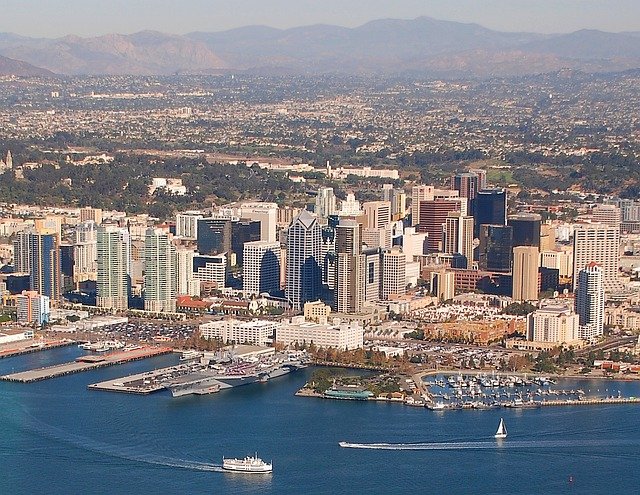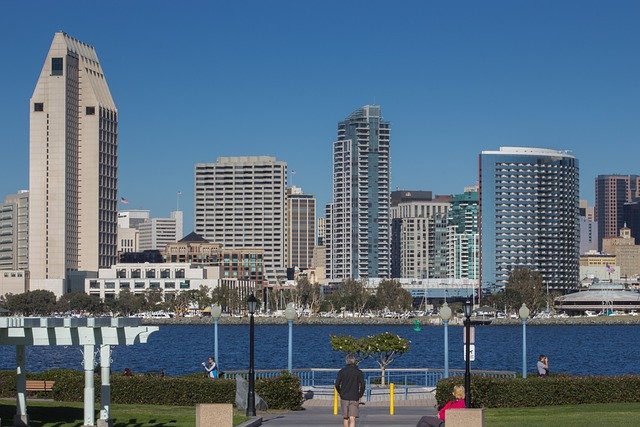Dreams of perfect weather, pristine beaches, and year-round outdoor activities fill our minds. San Diego turns these dreams into reality, though the move needs solid planning and local insights.
San Diego stands out as an amazing place to live. Our team has helped thousands of people move here, and we can vouch for its blend of incredible opportunities and enviable lifestyle. Life in San Diego brings stunning coastal views and a thriving job market, but also comes with higher living costs and a competitive housing market.
This piece walks you through everything about moving to America’s Finest City. You’ll learn about costs, neighborhoods, job prospects, healthcare choices, and practical moving tips that make your transition smooth.
Essential Moving Costs and Budget Planning
Let’s break down the real costs of moving to San Diego. Our experience helping countless people relocate here shows that budget planning tops everyone’s concerns. Here’s a practical guide to help you plan your finances.
Average Housing Costs and Market Trends
Housing costs have risen substantially in the last few years. The median home price in San Diego now sits at approximately $850,000. A one-bedroom apartment costs around $2,400 per month. Family-sized homes command higher prices, with three-bedroom apartments in the city center ranging from $4,000 to $6,400.
Monthly Living Expenses Breakdown
These expenses represent typical monthly costs in San Diego:
| Expense Category | Average Monthly Cost |
|---|---|
| Utilities (basic) | $150-200 |
| Transportation | $300-500 |
| Groceries | $300-400 |
| Healthcare Insurance | $400-600 |
We suggest setting aside an emergency fund that covers 3-6 months of expenses before your move. A single person needs at least $70,000 yearly to live comfortably, while a family of four should earn about $120,000.
Hidden Costs and California Taxes
The less obvious expenses can catch you off guard. San Diego’s sales tax stands at 7.75%, and property tax reaches 1.21%. Renters should budget for:
- Security deposits (typically 1-2 months’ rent)
- First and last month’s rent upfront
- Application fees and credit check costs
Monthly utility bills average $220 for energy and $183 for telecommunications. Transportation costs pack a punch too. Gas prices often exceed $5 per gallon, which sits well above the national average.
Finding Your Ideal San Diego Neighborhood
Families relocating to San Diego often tell us their biggest concern is finding the right neighborhood. Let’s explore the communities that make this beautiful city unique.
Coastal vs Inland Community Comparisons
The choice between coastal and inland living involves more than just beach access. Coastal areas like La Jolla and Pacific Beach embody that classic California lifestyle but command premium prices. To cite an instance, a one-bedroom apartment in La Jolla averages around $2,875 monthly. Inland areas provide better value and more space.
Here’s the typical pattern we see in both areas:
| Feature | Coastal Communities | Inland Communities |
|---|---|---|
| Climate | Year-round mild temps | More temperature variation |
| Lifestyle | Beach-focused, tourist-friendly | Family-oriented, quieter |
| Commute | Beach traffic challenges | Better freeway access |
| Housing | Premium prices, smaller lots | More space, newer construction |
Top Areas for Different Lifestyles
Our experience helping countless people has revealed ideal spots in San Diego. These recommendations match different lifestyle priorities:
- La Jolla: Perfect for luxury living with upscale shops, fine dining, and cultural attractions
- Pacific Beach: Ideal for young professionals seeking an active beach lifestyle
- North Park: Great for those wanting a trendy, artistic atmosphere with breweries and boutiques
- Carmel Valley: Excellent for families, with newer homes and top-rated schools
- Hillcrest: Popular with the LGBTQ+ community and those seeking a vibrant arts scene
School Districts and Family-Friendly Zones
Strong educational options shape our recommendations to families moving here. The Poway Unified School District serves many inland communities and maintains high standards. Canyon Crest Academy in Carmel Valley stands out as one of the area’s top high schools.
Notable family-friendly zones include:
- Carmel Valley: Known for its master-planned communities and excellent schools
- Scripps Ranch: Features highly-rated schools and family-oriented neighborhoods
- Del Mar: Combines coastal charm with top-tier educational options
Each neighborhood brings its own mix of amenities, community spirit, and lifestyle options. Success comes from matching these characteristics with your personal priorities.

Navigating the Job Market
San Diego’s job market shows steady growth and resilient employment opportunities. The city’s unemployment rate dropped to 4.6%, which indicates a healthy economy. The employment situation makes San Diego an attractive destination for professionals.
Major Industries and Employers
San Diego’s economy has expanded in a variety of key sectors. Healthcare and social assistance leads with 93,500 employees, followed by professional and scientific services with 92,500 employees, and hospitality employing 67,500 people.
The city’s largest employers that we recommend to our clients include:
- US Navy: Over 41,600 employees
- UC San Diego: More than 38,700 employees
- Sharp Healthcare: Above 18,700 employees
- County of San Diego: Approximately 18,600 employees
Average Salaries by Sector
Our clients often ask about salary expectations in San Diego. Here’s what the numbers look like in different sectors:
| Industry | Average Annual Salary |
|---|---|
| Management & Enterprises | $101,000 |
| Utilities | $78,500 |
| Finance & Insurance | $77,000 |
Tech professionals command some of the highest salaries in the city. Starting salaries begin around $65,000, while senior positions such as Vice Presidents can earn up to $155,000 per year.
Remote Work Opportunities
San Diego welcomes flexible work arrangements. The city offers more than 531 remote positions, with salaries ranging from $48,000 to $130,000 yearly. Many companies provide hybrid options that let you enjoy San Diego’s lifestyle while working flexibly.
Tech companies lead the way in remote work options. Qualcomm, San Diego’s biggest private-sector tech employer, offers flexible arrangements. Universities and healthcare providers have expanded their remote work options, making it easier to find a position that matches your preferred work style.
Practical Relocation Planning
Our unique experience helping thousands move to San Diego shows that successful relocations need careful planning. Here’s how to make your transition smooth and stress-free.
Timeline and Checklist
Start your moving preparations at least 2-3 months before your planned move date. This proven timeline will help you stay organized:
| Timeframe | Key Tasks |
|---|---|
| 8 Weeks Before | Research moving companies, start sorting belongings |
| 4-6 Weeks Before | Book movers, begin packing non-essentials |
| 3 Weeks Before | Update address, transfer insurance |
| 2 Weeks Before | Set up utilities, isolate valuables |
| 1 Week Before | Finish packing, prepare essentials kit |
Utilities and Services Setup
Setting up utilities ahead of time saves you from future hassles. Here’s what you should know:
San Diego Gas & Electric (SDG&E) needs these items to set up electricity and gas:
- Government-issued ID
- Service address
- Start date
- Contact information
The City of San Diego Public Utilities needs 10 business days to process water service requests. Cox offers internet service with prices starting at $20 monthly for simple cable internet.
Moving Companies and Resources
Our clients’ experiences help others choose reliable movers. A long-distance move (1,000 miles with 7,000 lbs) costs approximately $3,500. These tips will help you select a moving company:
- Get multiple estimates for moving labor at least 2 months before your move date
- Check their Better Business Bureau rating
- Verify their licensing and insurance
Pro tip: Weekday or mid-month moves typically cost less than weekend or end-of-month moves. Moving services in San Diego charge by the hour, while long-distance moves are priced based on weight and distance.
Keep your important documents accessible during the move, including identification, moving contracts, and utility setup confirmations. Pack an essentials box with items you’ll need right away – toiletries, medications, and basic tools.
Healthcare and Essential Services
Healthcare availability plays a vital role in relocation decisions. Let us walk you through San Diego’s medical landscape. Our experience with helping families settle here has taught us a lot about the local healthcare system.
Medical Facilities Overview
San Diego features exceptional healthcare facilities. UC San Diego Health stands out as the region’s only academic medical center. It includes:
- The area’s only Regional Burn Center
- The region’s first Level I Trauma Center
- Two Comprehensive Stroke Centers
The public health center network impresses us with six locations spread throughout the county. These centers serve patients Monday through Friday, 8 AM to 5 PM. Healthcare remains available in neighborhoods all around.
Key medical facilities include:
| Hospital | Notable Features |
|---|---|
| UC San Diego Health | 1,101 total beds |
| Scripps La Jolla | Nationally ranked in 6 specialties |
| Sharp Memorial | High performing in 12 procedures |
Insurance Considerations
Our clients should know about three main insurance options in San Diego:
- Medi-Cal: California’s Medicaid program offers free or low-cost coverage to eligible residents. Your immigration status doesn’t affect eligibility. The program has no copayments or deductibles.
- Covered California: The state’s health insurance marketplace provides:
- A 60-day window from your move date to apply
- Financial assistance to 9 out of 10 enrollees
- Silver plan costs capped at 8.5% of household income
- Private Insurance: Major providers like Sharp Health Plan give you various coverage options with direct access to healthcare networks.
Emergency Services Access
San Diego’s emergency response system provides strong coordination. The city offers:
- 24/7 Emergency Services:
- Police/Fire Emergency: 911
- Police Non-Emergency: 619-531-2000
- Fire-Rescue Department: 619-533-4300
The Office of Emergency Services (OES) handles countywide disaster response and runs the Emergency Operations Center. You can call 211 for non-emergency information during disasters. This service runs 24/7 and updates you about:
- Road closures
- Evacuation routes
- Emergency shelter locations
The San Diego Access & Crisis Line provides free confidential crisis support around the clock for mental health needs.
Conclusion
San Diego offers more than just a new address – people’s lives change dramatically in this coastal paradise. The perfect year-round weather, job opportunities, and top-notch healthcare outweigh the challenges of high living costs and tough housing competition.
Your success in San Diego starts with solid planning. A clear budget assessment comes first, followed by finding neighborhoods that fit your lifestyle and securing job prospects. Each area of San Diego brings something special to the table – you’ll find everything from lively beach communities to quiet family neighborhoods inland.
The city welcomes new residents warmly, but preparation makes the transition smoother. Understanding the housing market, looking into job options, and setting up basic services should be your priorities. A well-planned move with realistic expectations will help you make the most of America’s Finest City.

